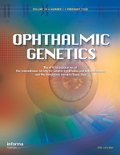
OPHTHALMIC GENETICS
Scope & Guideline
Unraveling the Genetic Mysteries Behind Vision
Introduction
Aims and Scopes
- Genetic Characterization of Eye Diseases:
The journal emphasizes the identification and characterization of genetic variants associated with inherited retinal diseases, syndromic conditions, and other ocular pathologies. This includes studies on the mutation spectrum, genotype-phenotype correlations, and novel gene discoveries. - Clinical Phenotyping and Management:
Papers often address clinical manifestations of genetic eye diseases, aiming to enhance understanding of disease progression, management strategies, and patient outcomes through detailed phenotypic descriptions and longitudinal studies. - Translational Research and Therapeutics:
The journal includes research on therapeutic interventions, including gene therapy approaches, pharmacogenomics, and innovative treatment modalities for inherited retinal diseases and other genetic ocular conditions. - Epidemiological Studies:
Research published also covers epidemiological aspects, exploring the prevalence, genetic predisposition, and environmental factors influencing various ocular conditions across different populations. - Ethical and Psychological Dimensions:
The journal occasionally addresses the ethical considerations and psychological impact of genetic testing and diagnosis on patients and families affected by hereditary eye diseases.
Trending and Emerging
- Expanded Genetic Testing and Screening:
There is an increasing focus on the use of next-generation sequencing and other advanced genetic testing methodologies to identify causative variants in inherited eye diseases, facilitating earlier diagnosis and personalized treatment strategies. - Longitudinal Studies and Natural History Research:
Emerging themes include comprehensive longitudinal studies that track disease progression and phenotypic variability over time, enhancing the understanding of genetic eye diseases and informing clinical management. - Psychosocial Impact of Genetic Diseases:
Research exploring the psychosocial aspects of living with genetic eye diseases, including anxiety, quality of life, and the emotional burden of genetic testing, is gaining prominence, reflecting a holistic approach to patient care. - Gene Therapy and Experimental Treatments:
There is a marked increase in studies related to gene therapy and experimental treatments for inherited retinal diseases, showcasing innovative approaches and clinical trial outcomes that could transform patient care. - Diverse Populations and Global Perspectives:
Research focusing on genetic eye diseases in diverse populations, particularly underrepresented groups, is trending, highlighting the need for inclusive research that considers population-specific genetic variants and disease phenotypes.
Declining or Waning
- Historical Case Reports:
There has been a noticeable decrease in the publication of historical case reports, possibly due to the shift towards more robust genetic analyses and clinical studies that provide broader insights into disease mechanisms. - Basic Science Research:
Research focused solely on basic science aspects of ocular genetics, such as cellular and molecular biology without direct clinical relevance, appears to be waning. The emphasis has shifted towards translational research that connects basic findings to clinical applications. - General Ophthalmology Topics:
Topics that do not directly relate to genetic factors, such as general ophthalmic conditions without a genetic component, are less frequently covered, indicating a narrowing of the journal's focus towards genetic and inherited conditions.
Similar Journals
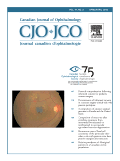
CANADIAN JOURNAL OF OPHTHALMOLOGY-JOURNAL CANADIEN D OPHTALMOLOGIE
Empowering professionals with cutting-edge insights.Canadian Journal of Ophthalmology - Journal Canadien d'Ophtalmologie, published by the prestigious Canadian Ophthalmological Society, serves as a leading platform for disseminating cutting-edge research in the field of ophthalmology. With an ISSN of 0008-4182 and E-ISSN 1715-3360, the journal boasts a commendable impact factor and maintains a strong presence within the medicine and ophthalmology categories, ranking in the Q2 quartile. This journal not only provides significant insights into clinical practices and advancements but also contributes to the understanding of ocular health issues facing contemporary society. Since its inception in 1966, it has published high-quality research, making substantial strides in both practical and theoretical aspects of ophthalmology until 2024. Although it is not an open-access journal, it establishes a vital resource for researchers, professionals, and students alike, fostering an informed community dedicated to improving vision care.
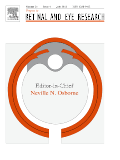
PROGRESS IN RETINAL AND EYE RESEARCH
Elevating Knowledge in Retinal StudiesPROGRESS IN RETINAL AND EYE RESEARCH, published by PERGAMON-ELSEVIER SCIENCE LTD, is a premier journal dedicated to the advancement of knowledge in the fields of ophthalmology and sensory systems. With an impressive impact factor and a Q1 category ranking in both Ophthalmology and Sensory Systems as of 2023, this journal exemplifies excellence in research dissemination. Given its stature, it ranks #1 out of 137 in Ophthalmology and #1 out of 42 in Neuroscience - Sensory Systems, placing it within the top percentile of scientific publications in these domains. The journal has been actively contributing to the field since its inception in 1994 and continues to be a vital resource for researchers, clinicians, and students seeking the latest insights and breakthroughs in the understanding of retinal diseases and eye health. While it maintains a traditional subscription model, the journal remains committed to publishing high-quality, peer-reviewed articles that drive forward the frontiers of eye research and therapeutic innovation. With its strong scientific rigor and a vast array of articles, PROGRESS IN RETINAL AND EYE RESEARCH is indispensable for anyone invested in the study of visual sciences.

CLINICAL DYSMORPHOLOGY
Exploring the intersection of genetics and anatomy.CLINICAL DYSMORPHOLOGY, published by Lippincott Williams & Wilkins, is a pivotal journal in the fields of anatomy, genetics, and pediatric health, with a significant focus on the study of congenital disorders and their phenotypic manifestations. Established in 1992, this esteemed journal has contributed valuable insights into the understanding of dysmorphic syndromes and their clinical implications, making it an essential resource for researchers, clinicians, and students alike. With an impact factor indicative of its robust scholarly influence, CLINICAL DYSMORPHOLOGY engages a diverse readership through specialized articles, case studies, and reviews that advance the knowledge of genetic conditions and associated anatomical anomalies. Although it operates under a non-open access model, the journal is highly regarded with a 2023 ranking of Q3 in Anatomy and Q4 in several other relevant categories, reflecting its ongoing commitment to quality research in the domain of clinical medicine. Researchers and professionals are encouraged to contribute to and explore the rich content of this journal as it continues to shape the discourse in dysmorphology and related fields until its expected convergence in 2024.
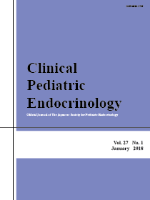
Clinical Pediatric Endocrinology
Bridging research and clinical excellence in pediatric endocrinology.Clinical Pediatric Endocrinology is a prestigious journal dedicated to advancing the field of pediatric endocrinology, published by the Japanese Society of Pediatric Endocrinology. With a respectable ISSN 0918-5739 and E-ISSN 1347-7358, this journal serves as a critical platform for innovative research spanning various aspects of endocrine disorders in children, including diabetes and metabolic conditions. Although it does not currently offer open access, it remains highly relevant in its category, being ranked in Q4 and Q3 tiers across multiple specialties as of 2023. With a publication history that spans from 1992 to 2024, this journal has contributed significantly to the literature, as evidenced by its inclusion in prominent databases. It invites submissions from researchers and practitioners worldwide, aiming to facilitate knowledge sharing and improve clinical practices in pediatric endocrinology. For those dedicated to enhancing care outcomes in children with endocrine disorders, Clinical Pediatric Endocrinology provides essential insights and fosters a community of engaged professionals.

npj Genomic Medicine
Unlocking the Potential of Genomic Researchnpj Genomic Medicine is a leading open-access journal published by NATURE PORTFOLIO, specializing in the rapidly evolving areas of genomic medicine, including genetics, molecular biology, and clinical applications. Launched in 2016, the journal has quickly established itself within the academic community, boasting a prestigious Q1 ranking in multiple categories, including Genetics and Molecular Biology, with remarkable positions in both Scopus ranks and percentiles. With an emphasis on innovative genomic research that bridges the gap between laboratory findings and clinical implementation, npj Genomic Medicine aims to provide a platform for researchers, professionals, and students to share significant advancements and insights. Being an open-access journal enhances accessibility to cutting-edge research, ensuring that vital discoveries in genomics can benefit a global audience and facilitate interdisciplinary collaboration. The journal continues to contribute to the forefront of genomic research, impacting both academic scholarship and practical healthcare solutions.
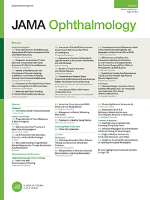
JAMA Ophthalmology
Exploring Innovations for Visionary OutcomesJAMA Ophthalmology, the premier journal in the field of ophthalmology, is published by the esteemed American Medical Association. Renowned for its rigorous peer-review process and commitment to advancing eye health research, JAMA Ophthalmology holds a prestigious position in the scientific community, boasting an impressive impact factor and ranking as Q1 in the category of Ophthalmology. With a Scopus rank of #3 out of 137 in its field and a remarkable 98th percentile, the journal serves as an invaluable resource for researchers, healthcare professionals, and students dedicated to the ophthalmic sciences. Readers can explore a wealth of cutting-edge findings, clinical studies, and review articles that not only contribute to the sustainable advancement of ophthalmic knowledge but also foster innovative approaches in patient care. As we converge into 2024, the journal continues to embrace open access principles, ensuring that groundbreaking research is readily available to a global audience, enhancing collaborative efforts and furthering the development of the ophthalmology discipline.

Case Reports in Ophthalmological Medicine
Fostering Collaboration for Enhanced Eye CareCase Reports in Ophthalmological Medicine, an esteemed journal published by HINDAWI LTD, is a vital resource for researchers and professionals in the field of ophthalmology. With an emphasis on the dissemination of novel case reports and innovative findings, this open-access journal has been providing accessibility to cutting-edge ophthalmological research since 2011, allowing for a broader exchange of knowledge among clinicians and academics. Although specific impact factor and h-index data are not detailed, the journal is committed to fostering a collaborative environment for the global ophthalmology community, promoting evidence-based practices through rigorously peer-reviewed articles. The journal's dedication to open access ensures that valuable insights reach a wider audience, facilitating advancements in patient care and surgical techniques. Case Reports in Ophthalmological Medicine stands as a pivotal platform for sharing diverse clinical experiences, contributing significantly to the enhancement of ophthalmology as a specialty.

Journal of the Korean Ophthalmological Society
Exploring New Horizons in Eye HealthThe Journal of the Korean Ophthalmological Society, with ISSN 0378-6471 and E-ISSN 2092-9374, is a pivotal resource in the field of ophthalmology, published by the esteemed Korean Ophthalmological Society. Based in South Korea, this journal is committed to advancing knowledge in ophthalmology through the dissemination of research that spans both clinical and experimental studies. Despite its current Q4 ranking in the 2023 Ophthalmology category, it serves as a crucial platform for emerging scholars, practitioners, and students seeking to contribute to and learn from the latest developments in eye care. While the journal does not currently offer open access, it is dedicated to fostering scientific dialogue and innovation within the community. With convergence years from 2018 to 2024, the journal's focus on contemporary issues in ophthalmology positions it as a relevant and timely source of information, critical for those engaged in this dynamic field. For further inquiries, the journal can be contacted at their address in Seoul, South Korea: SKY 1004 BLDG 701, 50-1 Jungnim-ro, Jung-gu, 04508.

Journal of Ophthalmology
Advancing Visionary Research in Eye CareThe Journal of Ophthalmology, published by HINDAWI LTD, is an esteemed open-access journal that has been disseminating significant research in the field of ophthalmology since 2009. With an ISSN of 2090-004X and an E-ISSN of 2090-0058, this journal facilitates global access to cutting-edge studies, making it an essential resource for researchers, clinicians, and students alike. Ranked in the Q2 category of ophthalmology for 2023, the journal holds a commendable position with a Scopus rank of #37 out of 137 in its field, placing it in the 73rd percentile. The journal encompasses a variety of topics such as clinical advancements, surgical techniques, and innovative technologies in eye care, aiming to advance scientific knowledge and clinical practice in ophthalmology. By providing a platform for both novel research and comprehensive reviews, the Journal of Ophthalmology is instrumental in fostering collaboration and scholarly communication within the global eye health community, and its commitment to open access ensures that impactful research reaches a wide audience without barriers.

BRITISH JOURNAL OF OPHTHALMOLOGY
Pioneering Discoveries in Ocular ScienceThe British Journal of Ophthalmology, published by the BMJ Publishing Group, stands as a leading peer-reviewed journal in the field of ocular sciences, with a distinctive focus on advancing the understanding of vision and its impairment. With a rich history dating back to 1941, this journal serves as an essential platform for researchers, professionals, and students in ophthalmology and related disciplines. It prominently ranks in the Q1 quartile for Ophthalmology and Cellular and Molecular Neuroscience in 2023, reflecting its esteemed reputation in the scientific community. The journal boasts impressive Scopus rankings, including Rank #6 in Medicine - Ophthalmology, showcasing its influential contributions to the field. Although it does not offer open access, the journal is committed to disseminating high-quality research that informs clinical practices and enriches the understanding of sensory systems. Submissions are encouraged from all areas of ophthalmology, including clinical studies, innovative research, and systemic reviews. Join the vibrant academic dialogue by engaging with the cutting-edge findings published in the British Journal of Ophthalmology, which aims to bridge the gap between research and clinical application.